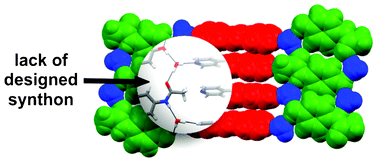‘Masked synthons’ in crystal engineering: insulated components in acetaminophen cocrystal hydrates†
Abstract
A series of cocrystals of acetaminophen and trans-1,2-bis(4-pyridyl)ethylene are reported wherein there is a lack of direct hydrogen-bonding between the components owing to interjected water molecules. A survey of the Cambridge Structural Database demonstrates that interjected water molecules involving cocrystals with similar components are rare. We term the lack of interaction as a ‘masked synthon’, which we aim to contribute to the development of synthon theory in organic solid-state chemistry.


 Please wait while we load your content...
Please wait while we load your content...